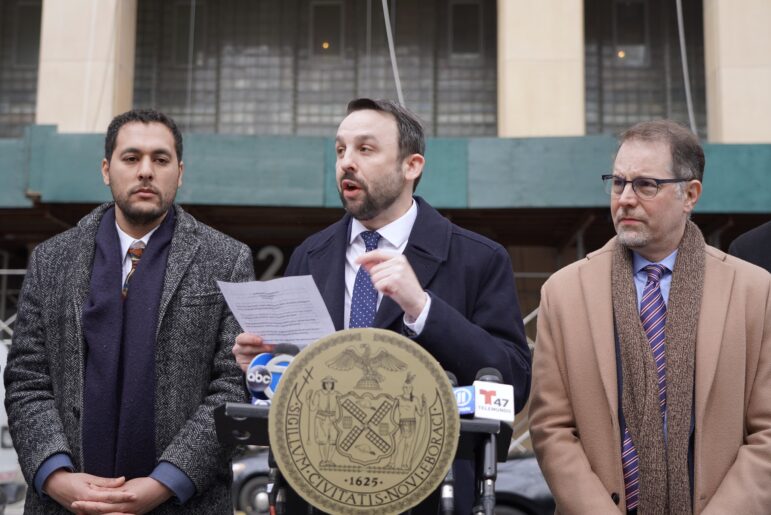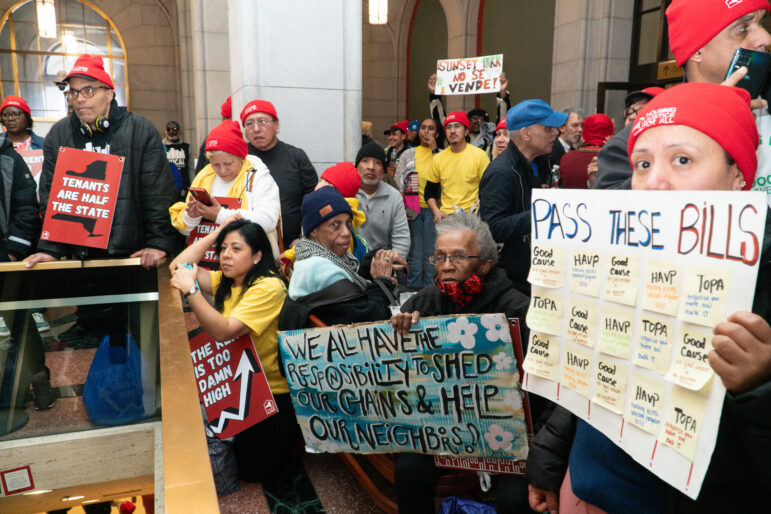Veteran community activists and environmentalists gave PlaNYC a cool reception last week when representatives of several of the city departments involved in the landmark sustainability program visited the Bronx to promote Mayor Bloomberg’s congestion pricing plan.
While many supported congestion pricing in principle, the assembled group – including community board members, clean water advocates, local elected officials and members of the Bronx Council for Environmental Quality and of Sustainable South Bronx – questioned its financial projections and implementation. Proposed earlier this year as part of the wide-reaching Plan, congestion pricing would reduce auto traffic in the most clogged parts of Manhattan by charging money to drive there, raising questions about ripple effects for residents of other areas.
More fundamentally, the forum revealed skepticism about the overall PlaNYC initiative and frustration with what some called the Bloomberg administration’s heavy-handed approach. Speakers voiced concern that PlaNYC was formulated and will be implemented without sufficient input from grassroots urban environmentalists who know what works. Others said the current sustainability goals are too modest and that PlaNYC is more public relations than policy.
“I got the feeling and perception that the program was done and was being brought to us,” said Dee Azell, chairwoman of Community Board 4, which covers the Highbridge, Concourse Village and Mount Eden neighborhoods south of the Cross Bronx Expressway. “We were concerned about some of the things we didn’t see. We didn’t see anything about health. If we are going to have a million more people here by 2030, will we need new hospitals in this area? Had we been involved with input early on we would have brought that as a concern,” Azell said.
Angela Sung, who represented the mayor’s office at the forum, said the city conducted aggressive community outreach as it formulated PlaNYC during the winter of 2006. The city met with more than 100 advocacy organizations, held town hall meetings in each borough and received 3,000 comments on its website, said Sung, a top staffer to Deputy Mayor for Economic Development and Rebuilding Dan Doctoroff, who is responsible for promoting the plan.
Regardless of those efforts, attendees argued that PlaNYC is being implemented in all the worst ways: top-down, anti-democratic, City Hall-centric.
“You don’t have to skim the surface much to see some real collaboration and change happening in New York and other cities. That’s why this is really frustrating, because it feels like the door has been closed and they aren’t interested in new ideas,” said Miquela Craytor, deputy director of Sustainable South Bronx, an urban environmental justice group that unsuccessfully pushed the architects of PlaNYC to include the creation of “green-collar” jobs – those within or promoting environmentally sustainable industry – as a central tenet of the initiative.
“They are saying, ‘we just want to get this plan done and then we’ll think about other ideas.’ Well, then you just want to tell me what you are doing. You are really not interested in what I say,” Craytor added.
Kathryn Garcia, chief of staff at the city Department of Environmental Protection, told the forum she was glad to hear people embrace sustainability so enthusiastically, but said PlaNYC could not address every environmental concern – at least not all at once.
“The plan was narrow. That was to make it manageable under the incredibly compressed time frame for implementation,” Garcia said.
The two-hour meeting in the basement of Nos Quedamos (“We Stay”), a Melrose community development corporation that grew out of the 1970s devastation of the Bronx, was not one of the official public hearings on congestion pricing. Those took place in each borough during the past two weeks. Instead, the Oct. 22 meeting was organized by M + R Strategic Services, a national communications firm that does a lot of work for the Campaign for New York’s Future, a coalition of groups that supports PlaNYC. The meeting was an attempt to get buy-in for congestion pricing. A spokesman for Rubenstein Associates, the public relations firm that handles media inquiries for the Campaign did not know whether similar meetings took place in other boroughs. “A lot of groups are doing their own pieces of the campaign,” said spokesman Bud Perrone.
But the Bronx groups hardly rallied around the Bloomberg plan.
“The concept in general is one that needs to be explored, but the particulars need to be fleshed out,” Craytor said in an interview after the meeting. “Often these great new initiatives are shoved down people’s throats, and that’s not a way to make something work.”
Craytor and others said they were worried congestion pricing would lead Westchester commuters to park their cars near subway stops in the Bronx, increasing air pollution and exacerbating overcrowding on several lines. Craytor and Dart Westphal, a former president of the Bronx Council for Environmental Quality, said the city needs to make subway and bus improvements before the plan is implemented, not afterward.
Westphal said he found it hard to trust that the revenues from congestion pricing would be equitably directed towards transit improvements throughout the city.
“I’m really concerned,” he said, recounting promises made by City Hall when the Third Avenue Elevated train was dismantled during the Lindsay administration that it would be replaced with an extension of the semi-mythical Second Avenue line. Buses that troll the route of the old El were supposed to be a temporary fix, Westphal said. “I’m really concerned all this congestion pricing money will go to the Number 7 train extension and the JFK express link in Lower Manhattan and building the west side, and we’ll still be stuck waiting for the bus.”
Steve Weber, an assistant commissioner at the city Department of Transportation, attempted to allay such suspicions. “This is different. Lindsay’s program wasn’t funded. We’ve already begun. This is fully funded,” Weber said.
Assemblyman Ruben Diaz Jr., who represents part of the south Bronx, said his constituents were reluctant to trust environmental edicts from City Hall after battling city and state government for a generation over what they argue were unsound environmental policies in the siting of a medical waste incinerator, waste transfer stations and sewerage treatment plants in their neighborhoods. He also objected to Bronx residents having to pay a higher congestion pricing fee than their New Jersey counterparts, since the price of bridge and tunnel crossings would be deducted from the congestion fee, a benefit city drivers would not receive.
“I think this is a bold idea. This is the right way to go, but I would think it would be a shame to go about it wrong. I certainly do not think that people who have weathered the storm and have been here should pay more,” Diaz said.








